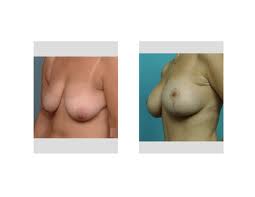
A most recent sampling of the results of combining breast lifts with implants appeared in the July 2013 issue of the journal Plastic and Reconstructive Surgery. In a paper entitled ‘Prospective Comparative Clinical Evaluation of 784 Cases of Breast Augmentation and Vertical Mammoplasty, Performed Individually and In Combination’ the author prospectively evaluated the clinical outcomes and safety of these cosmetic breast procedures over a 10 year period. Out of nearly 800 cases, the combination of breast implants combined with a lift were performed in nearly 150 of them. The implants were placed in a submuscular position and the breast lifts were done through a vertical scar technique. The outcomes showed a 21% revisional surgery rate for combined implants and lifts, 25% when lifts were performed alone and 11% when implants were placed alone.
This paper and the data presented are interesting and very relevant for two reasons. First, it can seen in a large series of surgeries from a single experienced plastic surgeon that the revision rate for combined lifts and implants is not rare at 21%. Even in the most experienced hands it is an operation that is very hard to get an ideal result in one surgery. Secondly, it can be seen that the true culprit that causes the need for revision is the lift more than the implant. Even when done alone the revision rate for lifts was equally high. Lifting and reshaping a breast is challenging and the effects of healing and breast tissue settling make for results that are not always predictable.
The other relevant point that this paper illustrates is that breast lifts and implants can be done safely together. There are plastic surgeons that will not do these two breast procedures in the same operation. They prefer to stage them by at least 3 months apart. While there is nothing wrong with that approach, and one can argue that it is less complicated to perform, it does have a 100% guarantee that two operations will be needed. When done together there is, at least by the results in this paper, of only a 20% risk of needing two operations.
Dr. Barry Eppley
Indianapolis, Indiana


